FRENCHTOWN, N.J. – A full and accurate historical account on the former covered wooden bridge between Frenchtown, N.J. and Uhlerstown, PA. has been added to the Delaware River Joint Toll Bridge Commission’s website.
The account is the culmination of research conducted over the past year. It corrects and embellishes a variety of prior published articles and reports, including internal documents of the DRJTBC. The updated historical account can be found on the Uhlerstown-Frenchtown Toll-Supported Bridge information page in the Commission website’s Bridges section: The direct address is: https://www.drjtbc.org/bridges/uhlerstown-frenchtown/#1716314700190-0ec49d12-32d1.
The new bridge history information should prove of interest to local history buffs and bridge enthusiasts alike. The account answers some previously unanswered questions about the wooden bridge, including the precise date of when it opened as a privately operated toll bridge. It also provides a litany of new factoids about the bridge, which spanned the river between what is now called Uhlerstown and Frenchtown for 87-1/2 years. Here are some of them:
- It was the 11th of 16 covered bridge crossings to be established along the river between New Jersey and Pennsylvania from January 1806 to February 1869.
- It opened as a private tolled crossing (tolls charged in both directions) on December 30, 1843. (Source: 1929 Trenton Evening Times article on the bridge’s sale to the states of New Jersey and Pennsylvania.)
- It was constructed for and operated by the former Alexandria Delaware Bridge Company, which the two states approved for incorporation in 1841. At the time, Frenchtown was a small unincorporated village within Alexandria Township. (Note: The Pennsylvania side of the river was called Mexico at the time of the bridge’s conception. Uhlerstown did not take hold as a place name until 30 years later.)
- This was the second attempt to establish an Alexandria Delaware Bridge Company. A prior use of that corporate name for a bridge between Durham Township, PA. and what was then Greenwich Township, N.J. proved unsuccessful in the early 1800s.
- Henry Stover, a Bucks County miller, was among the individuals who endeavored to establish a bridge at Frenchtown. Pennsylvania’s 1841 Alexandria Delaware Bridge Company legislation named him as a “commissioner” to sell Alexandria Delaware Bridge Company stock. The state previously named Stover to sell stock for the Milford (N.J.) Delaware Bridge Company and later named him to sell stock for the Point Pleasant Delaware Bridge Company. He is the only person known to have been involved with three 19th century bridge companies between New Jersey and Pennsylvania.
- The first bridge company president was a Flemington, N.J. farmer named Hugh Capner. Capner’s connection with the bridge is unclear, but records show he later had a familial connection with Henry Stover; Capner’s daughter, Mary, married Stover’s son, Jacob, in 1854. According to W.H. Davis’s History of Bucks County, PA., Jacob Stover later served for 20 years as the Alexandria Delaware Bridge Company’s president.
- The wooden bridge utilized a Town-type lattice design, an inexpensive construction method developed and patented by a Connecticut architect name Ithiel Town.
- Photographs suggest the bridge was narrower than earlier bridges along the river at Trenton, Easton, and New Hope as well as more contemporary counterparts at Milford, N.J. and Riegelsville, PA.
- The bridge was unique because it also had supports that extended diagonally off the siding to the nose or heel of the supporting masonry piers in the river. This further attests to the wooden bridge’s narrowness.
- Brief news items in area newspapers of the 1870s and 1880s show the bridge made enough money to provide semi-annual dividends to its stockholders.
- The bridge’s two spans closest to the New Jersey side were destroyed in the “Pumpkin Flood” of October 1903. These spans were replaced with steel double-intersecting Warren Truss spans in either 1904 or 1905. (Note: The Commission has been unable to identify what company manufactured these spans. An engineer’s field guide from the time identified the replacement spans as “U.S. Truss” and “D,S, Truss.” These markings apparently meant upstream truss and downstream truss — not manufacturers.
- The replacement spans apparently were designed by James Madison Porter III, who taught engineering at Lafayette College in Easton.
- The bridge operated with four original wooden spans and two steel-truss replacement spans for more than 25 years.
- The sale of the bridge and adjoining real estate from the Alexandria Delaware Bridge Company to the states of Pennsylvania and New Jersey took place at the Bucks County Courthouse in Doylestown, PA. on June 18, 1929. Among the bridge company’s officers attending the sale were Charles A. Manners, president, and F.H. Decker, secretary-treasurer. A Frenchtown attorney, Harry J. Abel, represented the company at the closing. The bridge was freed of tolls immediately after the sale took place.
- Prior to the bridge’s acquisition by the two states, tolls had been collected at the bridge for 85 years, 5 months, and 29 days.
- Within a year, engineers for the former Joint Commission for Elimination of Toll Bridges – Pennsylvania-New Jersey determined that the bridge’s four surviving wooden spans needed replacement and its two steel spans needed to be strengthened. The entire bridge (wooden and steel) was replaced in 1931 in a project overseen by the Joint Commission and funded by Pennsylvania and New Jersey tax proceeds.
- The four surviving 1843 wooden bridge spans were shut down May 6, 1931.
